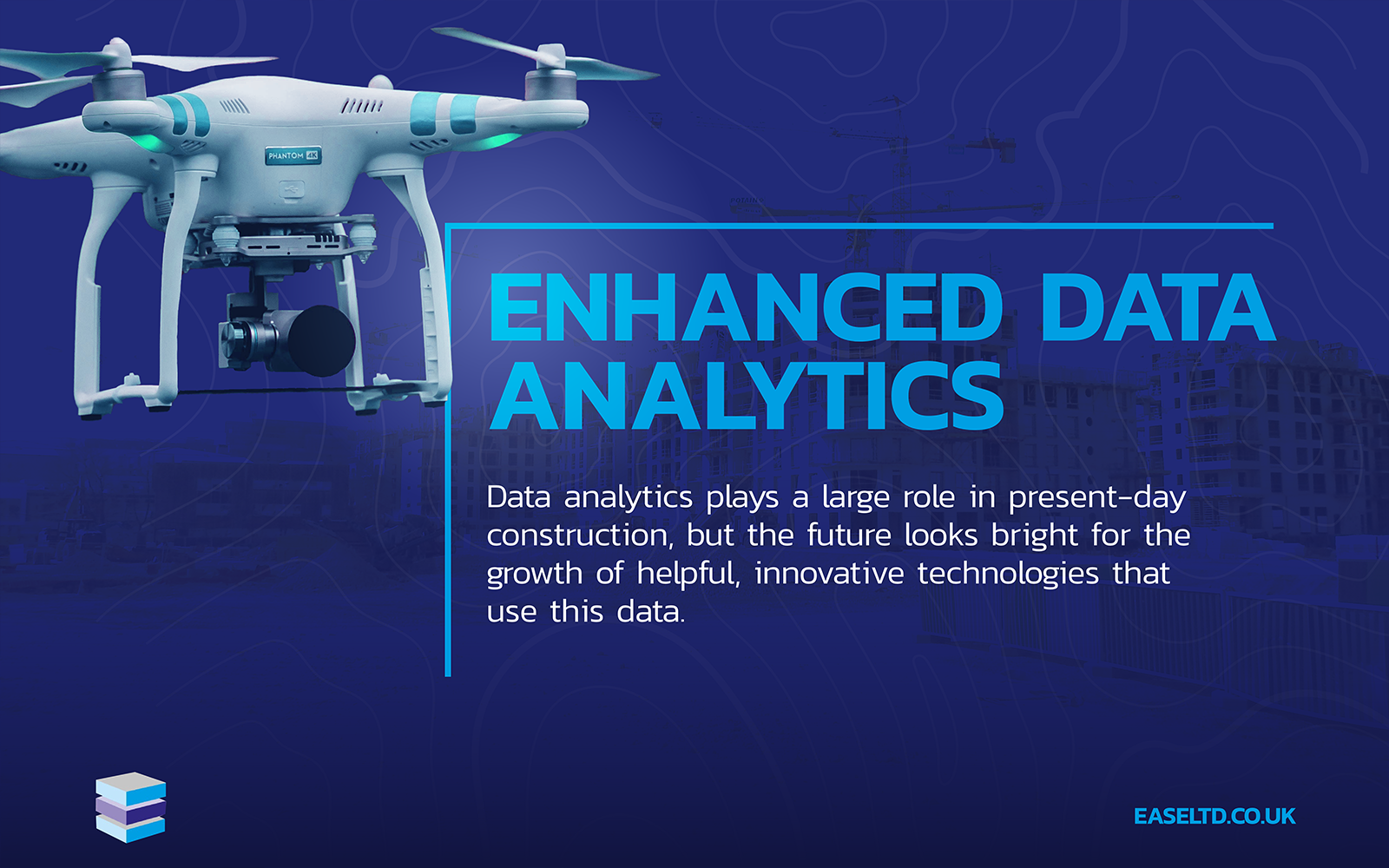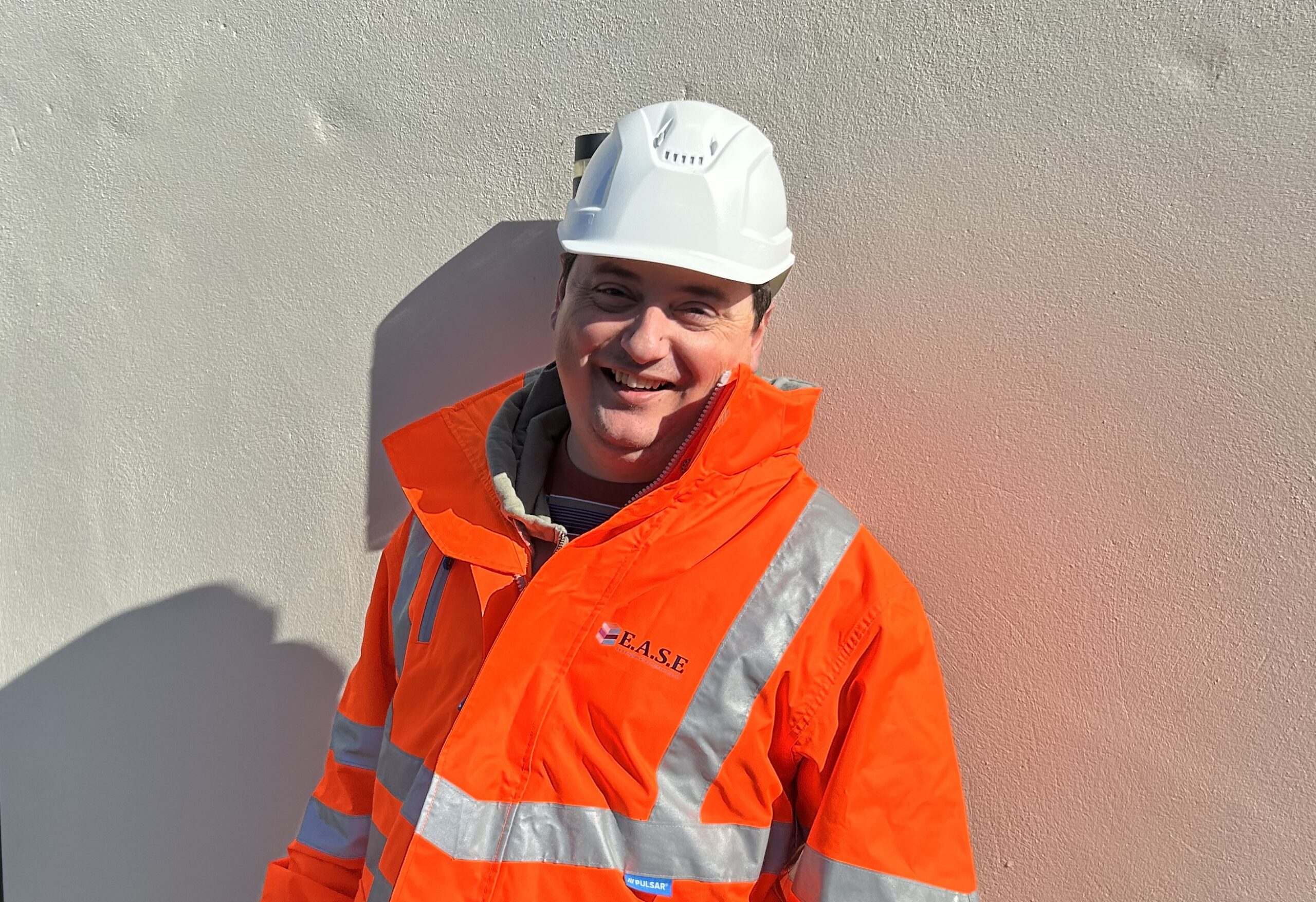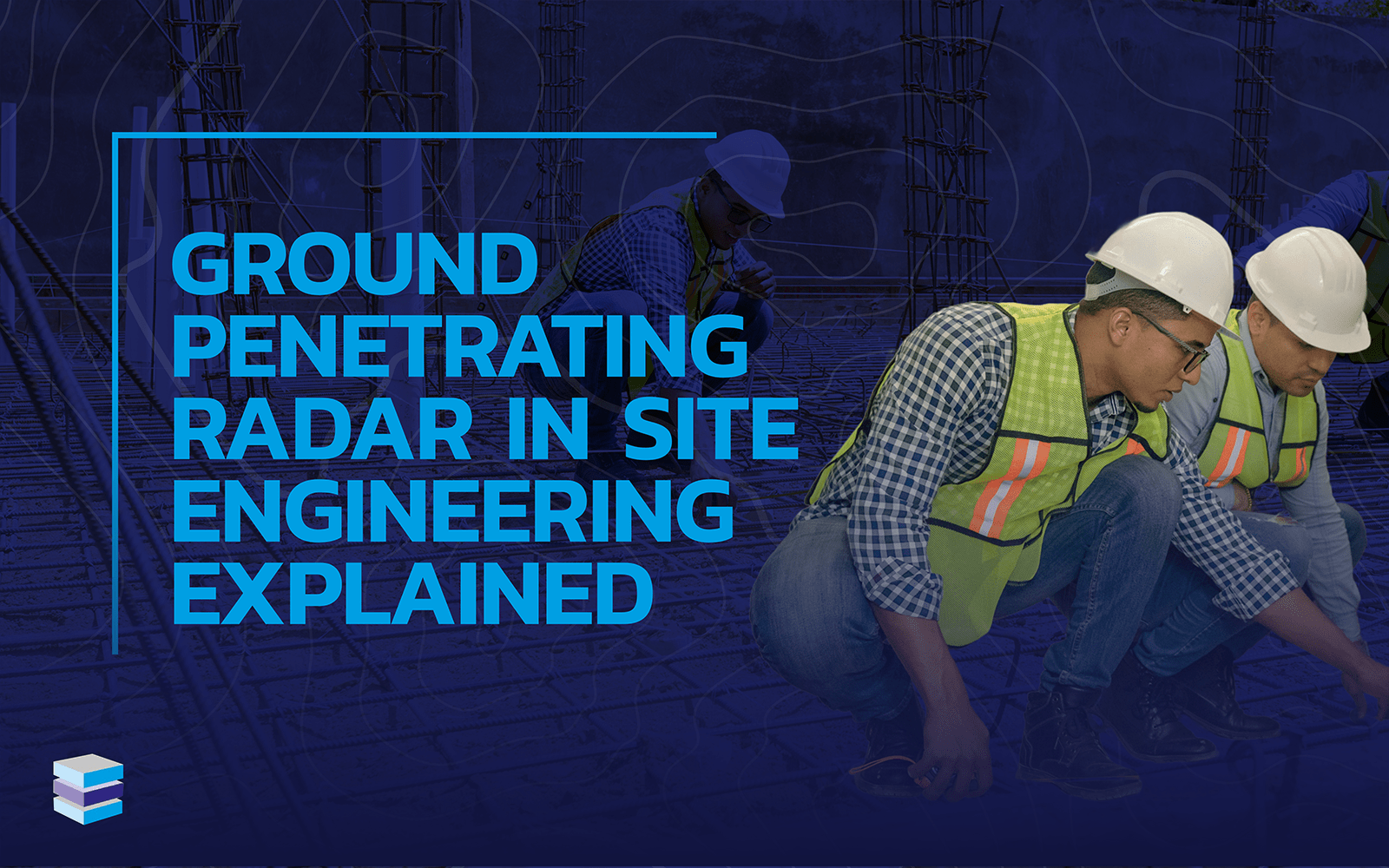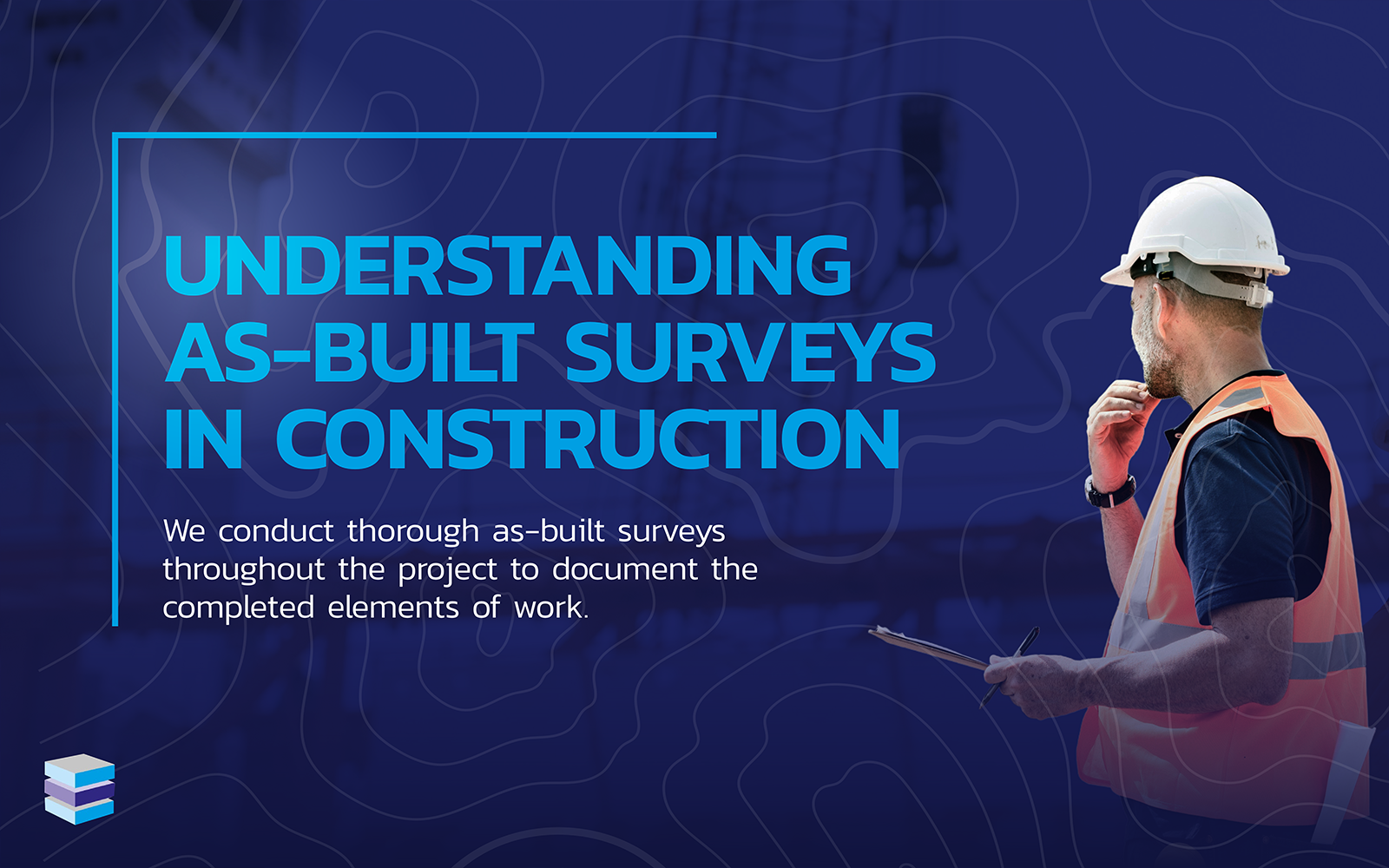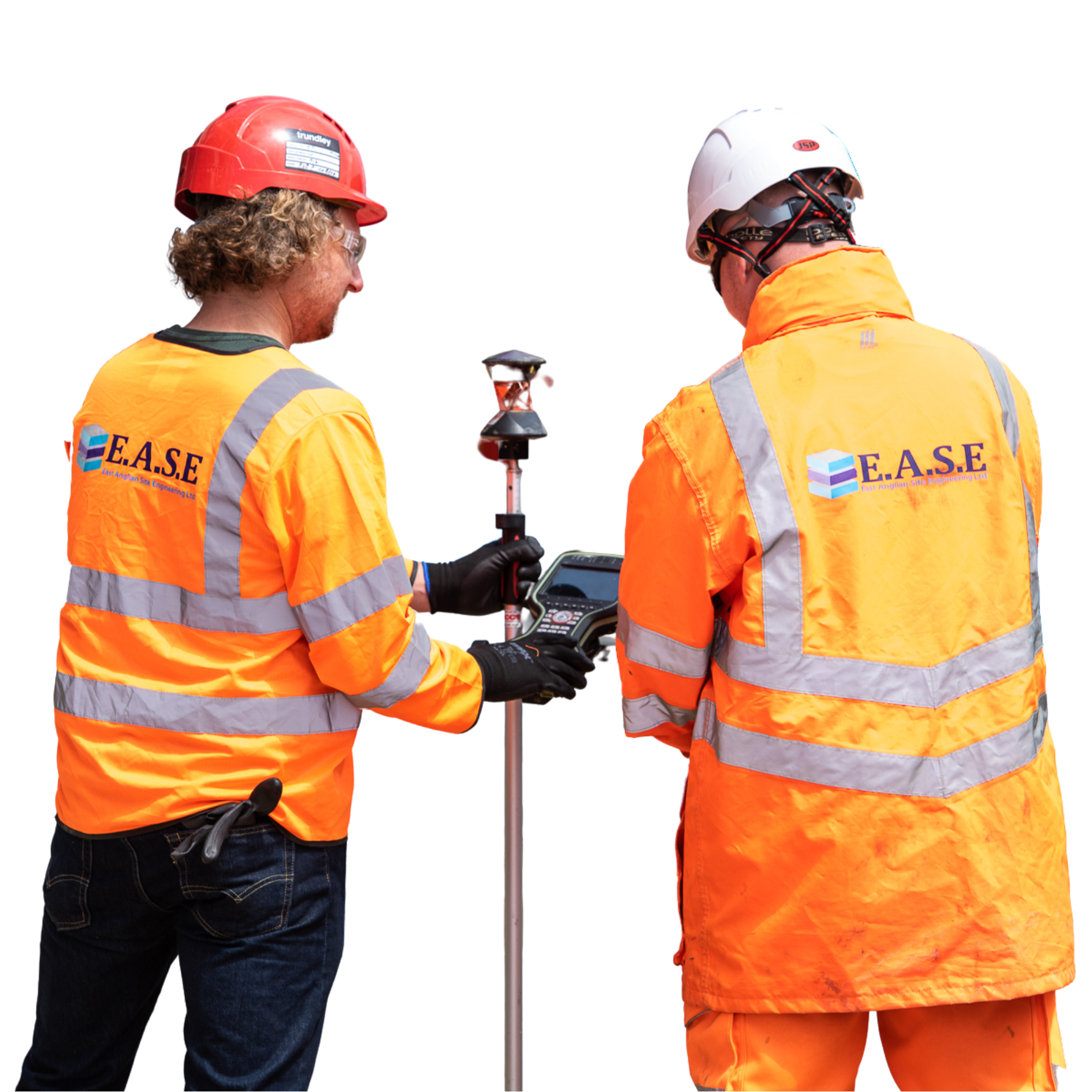In the ever-evolving field of site engineering, new technologies and advancements in current processes are changing the landscape daily. Data analytics plays a large role in present-day construction, but the future looks bright for the growth of helpful, innovative technologies that use this data.
In this post, we’ll delve into where we see analytics going within the site engineering world and how we believe it will help reshape our industry.
Advanced data collection
Data analysis refers to the use of tools and techniques to gather insights, optimise material use, make better decisions, and streamline processes. It is incredibly helpful for both workers and stakeholders and crucial for efficiency and safety.
New data sources are becoming more readily available to engineering and construction teams through emerging and developing technology. Because of this, more areas of data can be analysed and used to move processes forward.
Drone data
Though drones have been used for years in construction, the evolving technology within them allows for greater results. Drones collect aerial images and LiDar readings, which help with land surveying and assessing progress and risks. LiDar stands for Light Detection and Ranging and is the process of pointing a laser at a surface and measuring the time it takes for the light to be reflected.
Data from this equipment is becoming increasingly advanced. Site engineers can use this data to their benefit when planning, scheduling, and keeping workers safe. With detailed views from above and in tight spaces, site engineers can better grasp what is happening across the site, improving response times and productivity.
Efficiency is certainly set to increase as drones become more intelligent. Highly accurate survey data can be collected and analysed in minutes, saving hours of time for an engineer to walk the site. With the use of advanced drone data recording, on-site security will only continue to grow tighter. We can’t fully predict what’s in store for the construction world regarding drone data, but with its current capabilities, we expect great things.
Sensor Data
On-site sensors communicate their data through IoT (Internet of Things). This is a network between objects, or ‘things’, that include technology such as software and sensors. Data is exchanged and connected across this network between the objects via the internet. By using sensors within construction, operations can be improved because of the data collected.
Sensors have a very wide range of uses within construction. They can monitor material usage on-site and within the supply chain in real-time, reducing delays and increasing efficiency. They can help with equipment management by providing status data on machinery. This reduces repair costs by alerting managers and engineers when equipment requires predictive maintenance.
Sensors are also used to monitor site conditions, which is greatly helpful for efficiency and safety. They can detect changes in humidity, which can affect materials and equipment, and upcoming extreme weather conditions that pose safety risks. They can also detect gas and chemical leaks, potentially saving countless lives in an emergency.
Because sensors have such vast capabilities, there is a huge space for technological growth. From facilities management to much more accurate detection and monitoring, we’re in store for some exciting advancements in the data we can utilise from sensors.
BIM and CAD data
BIM (Building Information Modelling) is used in building and infrastructure projects. It is the digital representation of a building or structure’s functional or physical characteristics, including detailed information for stakeholders and construction teams.
CAD (Computer-Aided Design) is the use of computer software to create detailed designs of products, buildings, and structures in 2D and 3D. Designers and engineers can use this to produce accurate models and drawings for planning, visualisation, and actual construction.
BIM and CAD models contain dimensions, materials, and much more useful data that can be extracted and analysed. This helps site engineers, construction teams, and stakeholders gain insights into various aspects of the project. By examining this data, teams can identify areas for optimisation. This can be in construction sequencing, resource allocation, and design, which can result in a much more efficiently executed project, not to mention cost-effectiveness.
As technology advances, so do the capabilities of CAD and BIM modelling. These technologies are still an exciting asset in construction, especially when paired with augmented reality (AR) and virtual reality (VR). The future holds vast potential for the data that can be gathered and what we site engineers can use it for.
Accuracy and precision are set to improve greatly to allow for even more reliable information. Risk mitigation will only become more streamlined as our BIM and CAD data analysis advances, enabling potential risks and issues to be identified earlier in the project. In addition, design and construction processes will be better optimised based on CAD and BIM insights. This can reduce waste, work, and delays, resulting in saved costs.
The future of data analysis
As technology continues to advance, we believe that the data we can use as site engineers will increase. With further integration of IoT and AI, there is no telling how our landscape may change, but looking at the developments in the past decade, we know things can only improve.
Efficiency, planning and safety are of the utmost importance within the site engineering role. The advanced use of data and its capabilities will enhance these areas and give us the tools to perform our work even better. Setting out engineers will enable them to make more informed decisions, provide even better solutions, and work smarter overall as the future of data analytics becomes the present day.
We at East Anglian Site Engineering are excited about what the future holds. From predictive modelling and risk assessment to resource allocation and performance optimisation, we can see our industry evolving around us for the better. Data-driven approaches are reshaping how we work, and we look forward to incorporating the new tools and technologies from this data into our projects.
Highly trained and professional, our qualified site engineers embrace every project with a keen eye and level head. To arrange for one of our engineers to attend your project, contact us today by calling 01603 211808 or emailing info@easeltd.co.uk.


